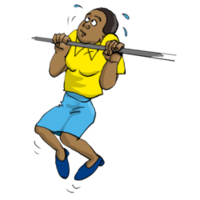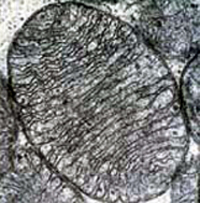Deep Vein Thrombosis
I am sorry to hear that the United States Vice-President Dick Cheney has just developed a blood clot in his leg and is being treated with anticoagulants (blood-thinning medications) that he will need to be on for several months.
He experienced some discomfort in his lower left leg this morning, and the diagnosis of deep vein thrombosis was made.
Mr Cheney is now 66 years old and has a history of cardiac problems. He has suffered at least four myocardial infarctions (heart attacks) and has a pacemaker.
He had quadruple bypass surgery in 1988 after his third heart attack.He also had an operation to remove blood clots around his knees in 2005.
Mr Cheney recently returned to Washington after long flights to Japan, Australia, Pakistan and Afghanistan.
As I discussed a few months ago deep vein thrombosis – often shortened to "DVT" – can be associated with long-distance flying because it leads to inactivity and dehydration. Not, as was formerly thought, low oxygen pressure.
Blood clots in the legs are not in themselves life-threatening but they can be dangerous if they become wedged in the lungs (pulmonary embolism) or other organs, which can in severe cases be fatal.
Although the venous and arterial sides of the circulation are often thought of as quite different, it is not that unusual for someone to have problems in both, either because of immobility, metabolic disturbances or low grade inflammation.
With Spring Break and early summer vacations coming up, please don’t forget to keep moving when you are on planes, limit the alcohol and coffee cnsumption, and have plenty of water to drink.
Bon voyage!
Dexterity and Strategy
I am a great believer in trying to do new things to stimulate latent abilities in the brain: there is more and more evidence about how valuable that can be.
Here is a very simple little game that can provide you with an excellent neurological work out.
Do not try it for more than a minute or two, or you might get repetitive strain injury or a psychological meltdown!
Healthy Aging
I have talked about the small number of simple steps that can dramatically reduce your risk of getting congnitive decline as your get older and some new evidence to show the benefits of non-drug treatments for dementia. I am pleased to say that my conclusions have just been supported by an editorial in the Journal of the American Medical Association.
I would like to let you know about another great resource: the International Council on Active Aging (ICAA) which has produced a great package of action items that are all rooted in good quality scientific research. The list is very similar to the ones that I have created for you here, and are very precise.
- Invest in good shoes and socks
- Play games
- Walk
- Increases your physical activity
- Do exercises to improve your balance
- Get regular eye checks, not only for corrective lenses, but to be checked for early evidence of diabetes or high blood pressure
- Seek out friends family and neighbors
- Modify your diet toward a "Mediterranean" one
- Laugh
- Get enought sleep
Whatever your age, I urge you to spend a few minutes working on a simple plan that will fit your schedule: your mind and body, family and friends will thank you forever.
Reducing Your Cancer Risk
“The doctor of the future will give no medicine, but will interest his patients in the care of the human frame, in diet, and in the cause and prevention of disease.”
— Thomas Alva Edison (American Inventor, 1847-1931)
I am sure that you will agree that prevention is better than cure. And this is a good time of the year to review where you are in your life and what you want or need to do for yourself and your loved ones.
According to a study reported in the Lancet in November 2005 more than one third of cancer deaths are attributable to nine modifiable risk factors.
To evaluate exposure to risk factors and relative risk by age, sex, and region, the investigators analyzed data from the Comparative Risk Assessment project and from new sources, and they applied population-attributable fractions for individual and multiple risk factors to site-specific cancer mortality provided by the World Health Organization.
Of the seven million deaths from cancer worldwide in 2001, approximately 2.43 million (35%) were attributable to nine potentially modifiable risk factors. Of these deaths, 0.76 million were in high-income and 1.67 million in low- and middle-income nations; 1.6 million were in men and 0.83 million deaths were in women.
Smoking, alcohol use, and low consumption of fruits and vegetables were the leading risk factors for death from cancer worldwide and in low- and middle-income countries. In low- and middle-income regions, Europe and Central Asia had the highest proportion (39%) of deaths from cancer attributable to the nine risk factors studied.
For women in low- and middle-income countries, sexual transmission of human papilloma virus (HPV) was also the leading risk factor for cervical cancer. Smoking, alcohol use, and overweight and obesity were the most important causes of cancer in high-income countries.
Between 1990 and 2001 mortality from cancer decreased by 17% in those aged 30 to 69 years and rose by 0.4% in those older than 70 years, according to the authors, but this decline was lower than the decline in mortality rates from cardiovascular disease for men and women. The decline in mortality in men was largely due to reduction in mortality from lung, prostate, and colorectal cancers, while in women, lung cancer increased in the 1990s, and death rates for breast and colorectal cancer decreased. An article published almost ten years ago in the journal Cancer Epidemiology, Biomarkers, and Prevention, it was estimated the worldwide attributable risk for cancer to infectious agents as 16%.
The nine factors were:
- High body mass index
- Low fruit and vegetable intake
- Physical inactivity
- Smoking
- Alcohol abuse
- Unsafe sex
- Urban air pollution
- Indoor use of solid fuels
- Injections from healthcare settings contaminated with hepatitis B or C virus
This all makes good sense, but it is good to see high quality research in reputable journals confirming what we suspected. The research also gives us further compelling reasons for taking a good look at our lifestyles and hopefully the motivation to do something to improve them. And in the case of air pollution and injection of contaminated products, to be active in getting things cleaned up.
“Keep your own house and its surroundings pure and clean. This hygiene will keep you healthy and benefit your worldly life.”
— Sathya Sai Baba (Indian Spiritual Teacher, c.1926-)
“Length of life does not depend so much on a good physical constitution as it does on the best use of the six non natural things, which if we rule aright, we shall live long and healthy lives: to divide the day properly between sleep and waking; to adjust our air to the needs of the body; to take more or less food and drink according to our age, our temperament and whether we live an active or inactive life; to take exercise or rest according to the quantity of food and whether we are lean or fat; to know ourselves and be able to rule our emotions and subject them to our reason. Whoever handles these wisely will live long and seldom need a doctor.”
–Giorgio Bagliivi (Italian Physician, Pathologist, Researcher and Author of De Fibra Motrice, 1669-1707)
“The best doctor prevents illness, a mediocre one treats illnesses that are about to occur, and an unskilled one treats current illnesses.”
–Chinese Proverb
Exercise Beats "Dieting" in Managing Obesity
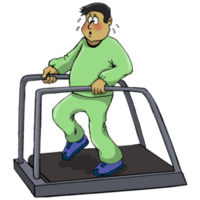
An important report was presented at the Scientific Meeting of the United Kingdom Society for Behavioural Medicine in Cambridge earlier this month.
A team of researchers from Leeds Metropolitan University and the University of Hull studied 62 women aged 24 to 55. They all had a Body Mass Index (BMI) over 30, which is classed as clinically obese. (Regular readers will know that most experts have moved away from using BMI to evaluate metabolic and cardiovascular risks).
The program encouraged women not to diet but to take part in exercise classes. They were required to do four hours a week of exercise, such as t’ai chi, aqua aerobics or circuit classes. So it was not necessary to become a hard core exercise freak!
The researchers found significant improvements in health and mental well-being.
The women in the study were also taught about good eating habits, including how to read food labels and cook food, and they received social support and behavioral therapy to help them respond to body cues such as hunger and feeling full.
After a year, the women had only lost a little weight but were significantly fitter and happier with themselves. Their blood pressure, heart rate and cholesterol fell and respiratory fitness increased. And the women also felt better in terms of general well-being, body image, self-perception and stress.
This small, simple study re-emphasizes what we have said to tens of thousands of people: fad diets will only help in the short term. For all practical purposes you can eat what you want, but in moderation. But try gradually to change the composition of your diet. I have written some advice on doing that. In Healing, Meaning and Purpose we also provide a number of tactics to help you tackle some of the psychological and social hurdles that may stand in the way of weight management. Which include something not often discussed: the twelve ego-fears that can be the hidden drivers to a lot of our behavior.
Understand them and you can gain a remarkable degree of control of your thinking and your emotions.
And it is exercise that should be the centerpiece of a weight management strategy.
This was re-inforced by a study published last week in the Archives of Internal Medicine: people who lost weight by restricting calories lost bone mineral density. Those with exercise-induced weight loss did not.
And as you doubtless know, loss of bone mineral density is one of the key risk factors for osteoporosis.
So please don’t buy in to some new “miracle” diets: they simply don’t exist.
Instead:
- Gradually increase your level of exercise
- Slowly change the composition of your diet
- Keep your internal organs – especially your intestine – in balance
- Develop your food awareness (I am going to do a whole post/article about that!)
- Learn how to deal with the psychological, social subtle and spiritual aspects of suboptimal eating (Check out the reources that I have already provided + a new eBook in the New Year)
And before you know it, you will be exactly where you want to be.
Promise!
Lack of activity destroys the good condition of every human being, while movement and methodical physical exercise save it and preserve it.”
–Plato (Athenian Philosopher, 428-348 B.C.E.)
“The way to cheerfulness is to keep our bodies in exercise and our minds at ease.”
–Sir Richard Steele (English Dramatist and Essayist, 1672-1729)
Multiple Sclerosis and Integrated Medicine
Although there are some fairly effective conventional therapies for multiple sclerosis (MS), many people with MS explore complementary and alternative medicine (CAM) therapies for their symptoms. The most effective strategies are to combine conventional and unorthodox treatments that address the physical, psychological, social, subtle and spiritual aspects of the illness. This combined approach also avoids the problem of people taking herbs or supplements that may either interact with each other or with conventional treatments.
It is also essential for us to get over the idea that MS is just something to be conquered. That may seem like an odd comment, but the language and the mindset of fighting, battles and warfare can be problematic. Let me explain something that I discuss at length in Healing, Meaning and Purpose.
There have been two distinct approaches to health in the Western medical tradition. The first is that the role of a physician is to treat diseases. That is the way that all my colleagues and I were trained. The second approach is to consider that health is the natural order of things. So in the first case we constantly hear the use of military metaphors: People speak of “a war on cancer,” “killer cells,” “magic bullets,” and the need to adopt a “fighting spirit.” Sadly this aggressive attitude by the medical profession may be at odds with the wishes and needs of an individual, the family and the other people in a person’s life. We have to try to strike a balance between the whole instinct to fight and expressions of healing and acceptance.
In the second case, the philosophy is grounded in the idea that we need to work in harmony with nature. The maintenance of health and well being comes from reestablishing balance and harmony not just in ourselves but also in our relationships with each other, with society and with the entire environment around us.
Some of the most commonly CAM therapies include dietary modification, nutritional and herbal supplementation, and mind-body therapies. There has been a revival of interest among MS researchers about the therapeutic potential of low-fat diet and essential fatty acid supplementation in MS. The research on CAM therapies in MS is still exploratory, but considering peoples’ interest and common use of these therapies, further research in this area is clearly warranted. Many sufferers show “spontaneous” recoveries, so reports of cures with unorthodox remedies are often treated with skepticism.
Diet, Vitamins and Supplements: There have been scattered reports of symptoms improving after the removal of dental amalgam, but there is scant evidence that this is really worthwhile. There is some evidence 1. 2. 3. 4. that polyunsaturated fatty acid (PUFA) supplementation may help MS. There used to be a lot of support for something called the “Swank diet,” but over the years the evidence has not been very good. In a small number of people with MS certain foods can make them worse. This is to expected if there is an autoimmune component to the illness. It is always a good idea to see if there is something that makes a person feel worse. The other important qestion is whether food additives may be causing symptoms. Although this must be uncommon, I have written elsewhere about occasional cases of MS symptoms with all the classical neurological, biochemical, radiological and electrical signs that have improved or become completely better after removing aspartame from the diet.
Physical exercise: Exercise is highly recommended for people with MS, though it is best to avoid it during an attack. There is evidence that over-exertion can actually bring on an attack. There is some literature about the use of Feldenkrais bodywork in MS, but a study from the University of North Carolina failed to find any benefit. T’ai Chi Ch’uan, qigong, yoga and graduated exercise have all been helpful to some people with MS, but it is essential to discuss it with a healthcare provider to see how any one of these fits in to an package of care. There is no published data on the use of Pilates in MS. At least not in any of the languages that I can read. But since it has been shown to improve posture and flexibility, it is logical to think that Pilates might be helpful, and it would be very valuable to see some research on it.
Acupuncture: Although widely used, the research on acupuncture in MS is not yet convincing. Like most acupuncturists I’ve had some good results in treating pain, muscle stiffness and fatigue. I’ve also seen people achieve some remarkable recoveries, but there are two issues: MS is a relapsing and remitting illness. And second, many of the people who did well only did so because they shifted their thinking: acupuncture became the vehicle for their personal transformation rather than a device for removing nasty symptoms.
Homeopathic remedies: Even the most enthusiastic homeopaths have fairly limited expectations of what homeopathy can achieve in MS.
From the point of view of homeopathy there is little point in making the diagnosis on multiple sclerosis because the disease has such a variable course with highly variable symptoms. To a homeopath the diagnosis is not useful: it is the symptoms that are all important. The homeopathic treatment of MS is highly individualized: one of the key items is the timing of symptoms and associated features. Some of the most common remedies for people with MS are:
- Agaricus
- Alumina
- Argentum Nitricum
- Arsenicum
- Aurum Metallicum
- Causticum
- Cocculus
- Conium Maculatum
- Ignatia
- Lachesis
- Nux Vomica
- Natrum Muriaticum
- Phosphorus
- Plumbum
This is not the whole list of homeopathic remedies that we have sometimes found helpful, but it highlights some of the more commonly used ones in people with the symptoms of MS.
Herbal remedies: Many herbal remedies have been tried in MS, and many experts have told me that they have had some good results. There is an important issue in MS called “apitherapy,” a.k.a. bee venom therapy (BVT). Several reports suggest that bee venom may be an effective treatment for patients with MS. But formal trials suggest that although the treatment appears relatively safe apart from itching and swelling of the skin, it does not seem to be helpful.
The best approach is to embrace the best of what conventional medicine has to offer, combine unorthodox approaches and to realize that management of a chronic illness is not about dominating it but learning from it and learning strategies for peacefully co-existing with it.
Aerobic Exercise, Diet and Abdominal Fat
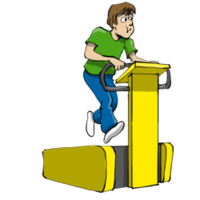
Most of us are probably aware of the difference between fat inside the abdomen – “intra-abdominal,” also called visceral fat – and fat on the hips or the outside of the abdomen. The fat inside the abdomen is associated with insulin resistance, diabetes and at least a dozen other medical problems. This fat is also covered in cortisol receptors and breaks down and reforms extremely rapidly. By contrast the fat on the outside of the body has relatively few metabolic consequences until the amount of it becomes extreme.
Excess fat in general is not a good idea, but it is the intra-abdominal fat that is the best target for treatment.
New research has shown that the addition of aerobic exercise to a standard dietary weight loss program can preferentially reduce abdominal fat in overweight people.
The investigators did a twenty week prospective study in which looked at 45 obese women with an average age of 58 years. During the study the participants bought their own breakfast in consultation with a dietitian, but had their lunch and dinner prepared by the kitchen staff of the hospital. They were either told to continue with their normal routine of daily activities, or to do low-intensity or high-intensity aerobic exercise. The investigators not only did all the standard measurement on their volunteers, they also did fat biopsies and measured the size of the fat cells.
They all lost weight, but in the people who did the high-intensity aerobic exercise, they also had a reduction in the size of the fat cells in subcutaneous tissue taken from the abdomen.
This is interesting, but it’s necessary to sound a note of caution about the experiment: the investigators were measuring subcutaneous fat cells rather than the all important intra-abdominal fat cells. The trouble with measuring those is simply getting at them. It is not easy trying to get fat out of the abdomen without some invasive procedures.
Exercise and Mood
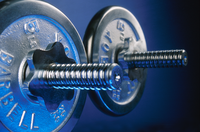
Most people who exercise on a regular basis soon begin to notice that if they miss a day or two, it will quickly have an effect on their mood and motivation. There’s recently even been some research to confirm it. Many years ago it was shown that one of the mechanisms for the “Runner’s high,” was the production of endorphins and we now have a great deal of research that is revealing the fundamental mechanisms linking exercise and mood.
Though the link between exercise and mood has been recognized for decades, in the last few years we have seen an increasing body of evidence that exercise can have a useful effect on people with mood disorders. The evidence is extensive (For example: 1. 2. 3.) and is now so strong that many clinicians – and certainly all practitioners of Integrated Medicine – routinely recommend physical exercise as part of a package of health care. There is particularly good evidence that exercise will help with some of the less common types of depression. An exercise program may particularly benefit women with progesterone-related premenstrual mood disturbances.
We now have some good evidence about the mechanisms by which exercise can improve mood. Researchers in China did some experimental work in rats with what they called “Chronic unpredictable stress.” It is just what it sounds like. If the little critters keep getting stressed, they develop many of the signs of depression: they show loss of appetite, social withdrawal and a reduction in exploratory behavior. We could say that the repeated stress reduces their resilience. Chronic stress causes dysfunction in the hormonal system that links the hypothalamus and pituitary glands at the base of the brain, with the adrenal glands that are perched atop the kidneys.
The researchers then gave some of the rats the opportunity to exercise on a wheel. The exercising rats had an increase in the amount of a growth factor called brain-derived neurotrophic factor (BDNF) in a key region of the brain called the hippocampus. In the non-exercisers, the levels of the growth factor went down as they experienced more and more stress. Exercise also smoothed out stress-induced rises in the hormone cortisol.
This is particularly interesting because previous research had shown us that exercise can increase BDNF levels in the brains of stressed and unstressed animals. We also know that if an antidepressant is going to work, it has to be able to stimulate the production of BDNF in the hippocampus of the brain.
One thing that has not been much studied is the impact of exercise on sleep architecture. Most exercisers know that a good workout, run or hike can make you sleep like a log. And there is increasing evidence that correcting sleep disturbances can be a most effective way of improving mood. So much so that many of us now believe the sleep disturbances underlie many mood disorders, rather than sleep disturbances being symptoms of sleep disorder.
My conclusion from reading the literature and working with countless individuals is that unless there is a medical contraindication, a combination or weight training and aerobic exercise should be part of the treatment program for anyone with depression. The biggest problem is motivating someone with depression t do something like exercise. Sometimes it is necessary to wait until the primary treatment has taken hold. Though we have often had a great deal of success by using some of the motivational systems that I’ve described in Healing, Meaning and Purpose.
Breathing

“Without mastering breathing, nothing can be mastered.”
–George Gurdjieff (Armenian-born Adept, Teacher and Writer, c.1873-1949)
I strongly recommend breathing. It’s actually one of my favorite pastimes….
Of course breathing is all-important, but it is just as important to ensure that you are breathing in good quality air. Scattered throughout the world are weather fronts accompanied by hot dry winds of ill repute:
- The Santa Ana Winds of Southern California,
- The Mistral of France
- The Khamsin of North Africa
- The Foehn of Switzerland
- The Sharav in Israel
- The Chinook of Canada
- The Sirocco in parts of the Mediterranean
- The Xlokk of Malta
- The Zonda in Argentina
- The Halny of the Carpathian Mountains
These are just some of these winds, that have been known for centuries to precipitate a variety of symptoms in the exposed population, including depression, irritability, insomnia and headaches. The explanation of these effects is an increase in the number of positive ions in the atmosphere, which alter the amount of serotonin in some parts of the brain. I was consulted about an epidemic of headaches amongst people working in an electrically insulated room. It soon became clear that the setup had allowed an enormous concentration of positive ions, and once they installed a negative ionizer virtually all the headaches stopped. We believe that many of the beneficial effects of high altitudes or of being near waterfalls of fountains spring from the way in which they generate large numbers of negative ions.
Poor oxygenation of the lungs has been known for many years to be associated with disease. Pulmonary tuberculosis classically affects the upper lobes of the lung, where there is the poorest oxygenation, and it has been known for a century that people suffering from a blockage of the mitral valve of the heart, which leads to high blood pressure in the lungs, do not get tuberculosis in that part of the lungs.
Conscious control of the breath enables us to modulate the activity of the autonomic nervous system. Specific types of breathing can induce specific psychological and physical effects.
We usually breathe through one nostril at a time. Either the right or left nostril is dominant for anywhere from 45 minutes to two hours. You then switch sides. This is known as the nasal cycle, and is one of the faster circadian rhythms. The popular yogic practice of single nostril breathing is thought to feedback directly into the hypothalamus of the brain. You can learn to use this to your advantage. If you are right handed, if you direct your focus onto opening the right nostril, you may well find an increase in salivation, which is an aid to good digestion. A useful trick that we have used for many years is at bedtime to start by lying on your left side, which has the effect of opening the right nostril, and after ten minutes roll onto your right side for sleep. Again you reverse this if you are left hand dominant. It seems that this simple trick lowers your core temperature, which is one of the main determinants of sleep. There is some research that opening the right nostril increases body temperature, while opening the left has a calming effect. These techniques are often very helpful. Apart from these physical effects, using the breath is one of the quickest ways to learn to sense the subtle forces of the body.
You may already have some breathing practice that you like, and by all means continue using it. If you need a new one, the simplest that I have ever been taught, and that I have used with countless students and patients is this:
Count your breaths. Breathe deeply using your abdominal muscles, so that you are drawing more air into your lungs. Stop immediately if you feel faint or dizzy. As thoughts come up, keep concentrating on the incoming and outgoing breath. Gradually slow the breath, by extending the pause between the inhalation and exhalation.
I always make myself unpopular when I insist that people check with a healthcare provider before stating any exercise plan, including breathing. But I’m going to say it anyway. It just makes good sense!
“Controlled deep breathing helps the body to transform the air we breathe into energy. The stream of energized air produced by properly executed and controlled deep breathing produces a current of inner energy which radiates throughout the entire body and can be channeled to the body areas that need it the most, on demand. It can be used to fuel a specific physical effort, such as tennis or jogging. Or you can use this current of inner energy to relieve muscular tension throughout the body, revitalize a tired mind, or soothe localized aches and pains.”
–Nancy Zi (American-born Chinese Opera Singer, Voice Teacher and Qigong Expert)

